Lemon Pound Cake
This post may contain affiliate links. Read my full disclosure policy.
This lemon pound cake is the ultimate dessert for lemon lovers.
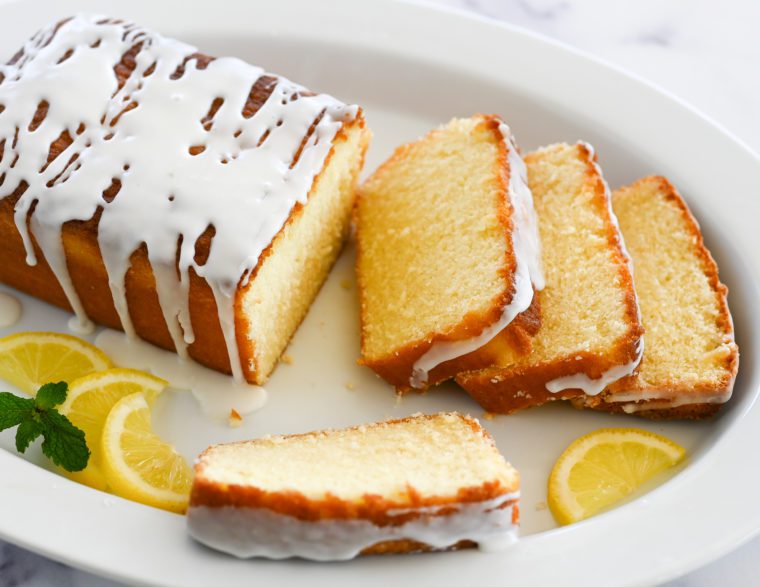
Calling all lemon lovers! This lemon pound cake is a dessert made just for you. The recipe incorporates both lemon zest and lemon juice into the cake batter, infusing the cake with a lovely lemon flavor. But the real magic happens after baking — the cake is generously doused with lemon syrup and then drizzled with a tart lemon glaze, delivering an intense burst of lemon flavor with every bite. The recipe yields two ultra-moist loaves that stay fresh for days on the countertop or can be frozen for later. If you’d like to switch things up, try my popular lemon poppyseed cake and lemon blueberry pound cake variations. A big thank you and shoutout to Karen Tannenbaum, one of my longtime readers, for inspiring this wonderful recipe!
What You’ll Need To Make Lemon Pound Cake
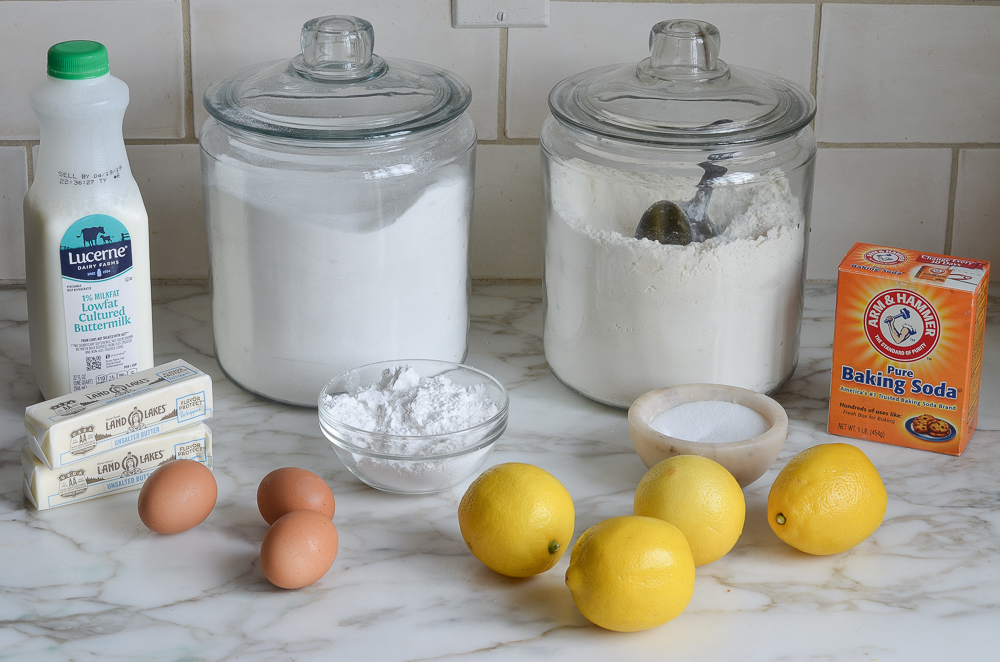
STEP-BY-STEP INSTRUCTIONS
Start by zesting and juicing your lemons. And be sure you zest the lemons first, otherwise, it will be impossible once they are juiced. The best tool for zesting is a rasp grater but any fine grater will do.
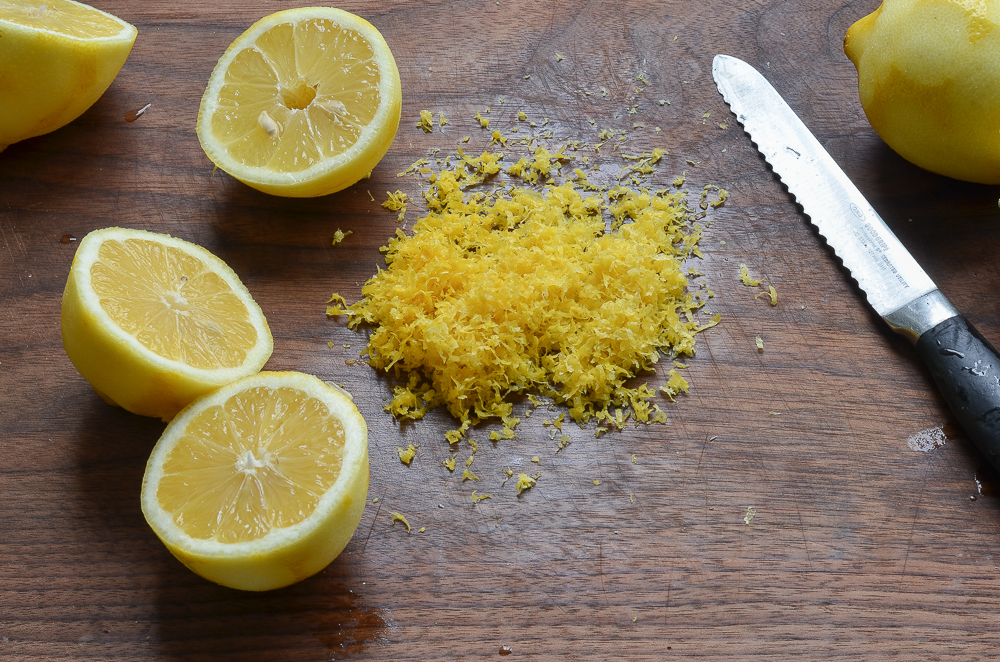 Combine the flour, salt, and baking soda in a mixing bowl. I always add dry ingredients in little piles so I don’t forget what I’ve already added.
Combine the flour, salt, and baking soda in a mixing bowl. I always add dry ingredients in little piles so I don’t forget what I’ve already added.
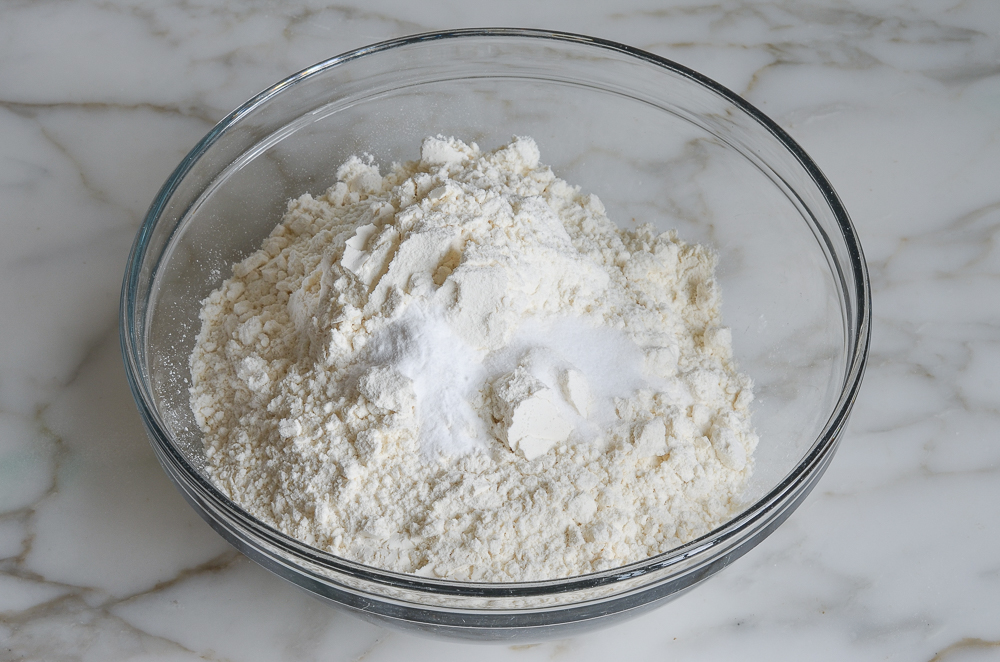 Whisk and set aside.
Whisk and set aside.
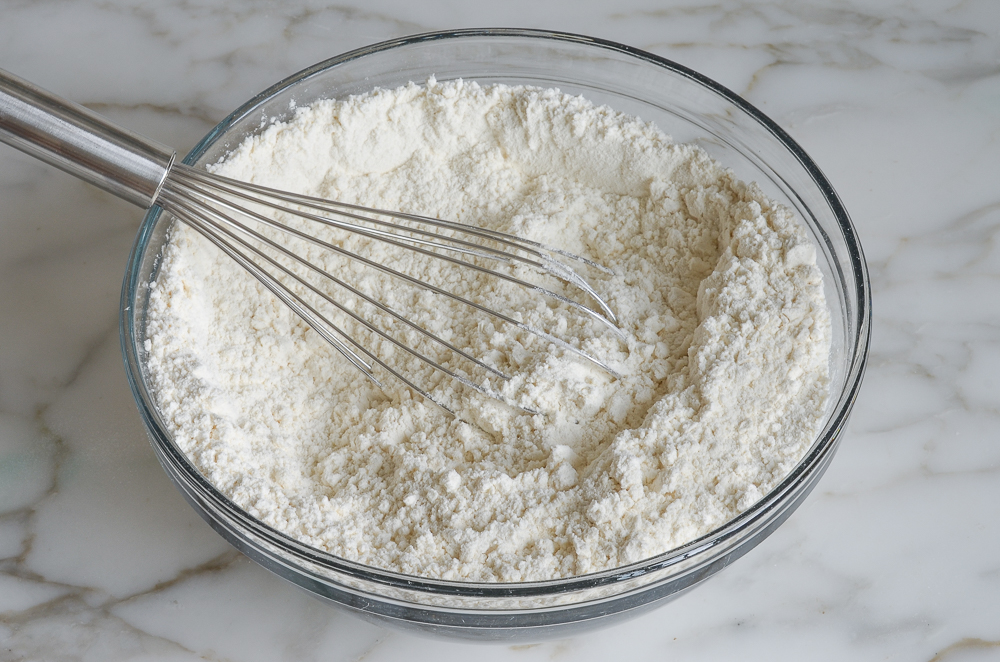
In another bowl, whisk together the buttermilk, lemon zest, and lemon juice. Set aside.
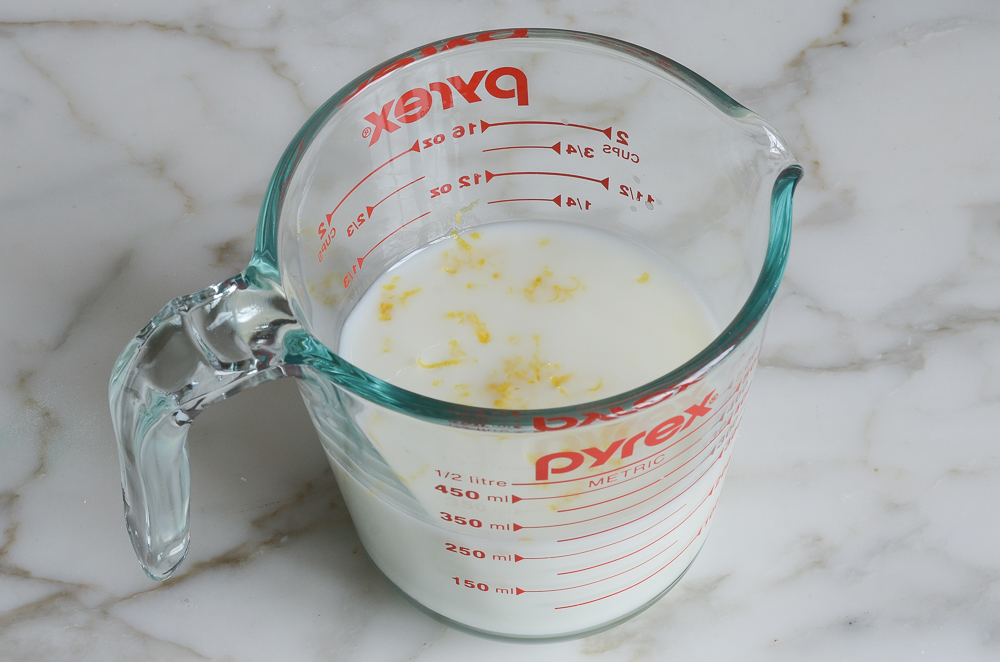
In the bowl of an electric mixer fitted with the paddle attachment (or beaters), cream the butter and sugar on medium speed until light and fluffy, 3 to 4 minutes.
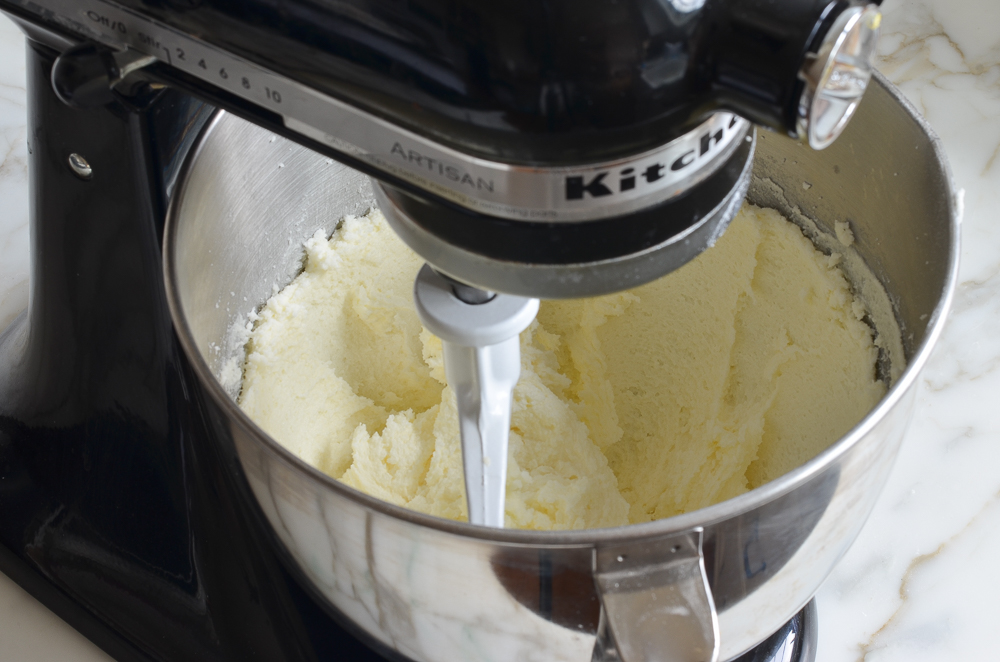
Scrape down the sides of the bowl, then beat in the eggs one at a time, beating well after each addition. Scrape down the sides of the bowl again.
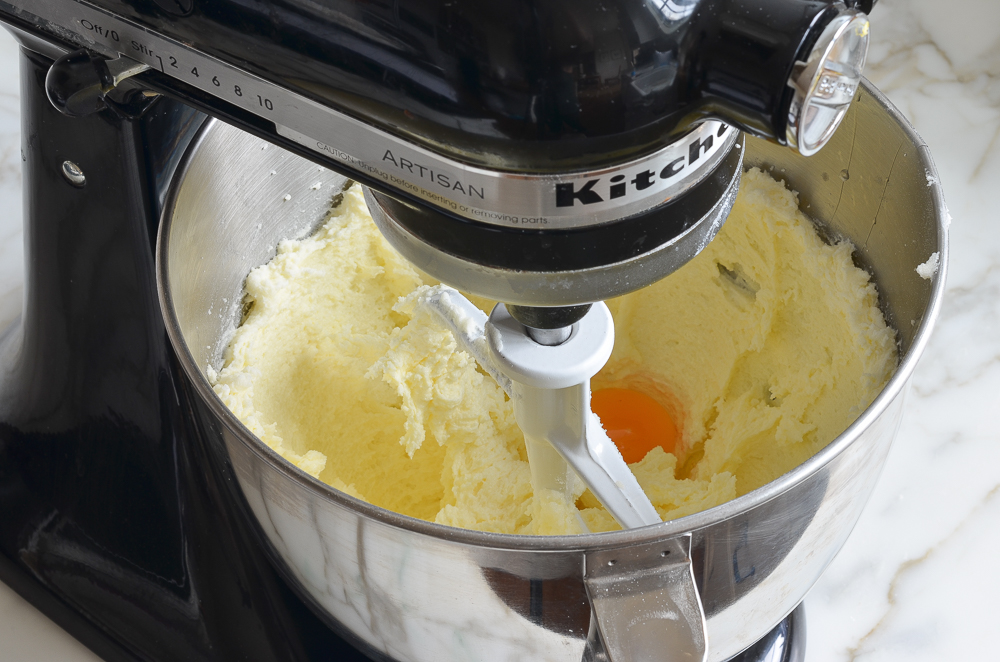
With the mixer on low speed, beat in one-quarter of the flour mixture, then one-third of the buttermilk mixture. Beat in another quarter of the flour, then another third of the buttermilk mixture. Repeat with another quarter of the flour and the remaining buttermilk mixture. Finally, beat in the remaining flour mixture.
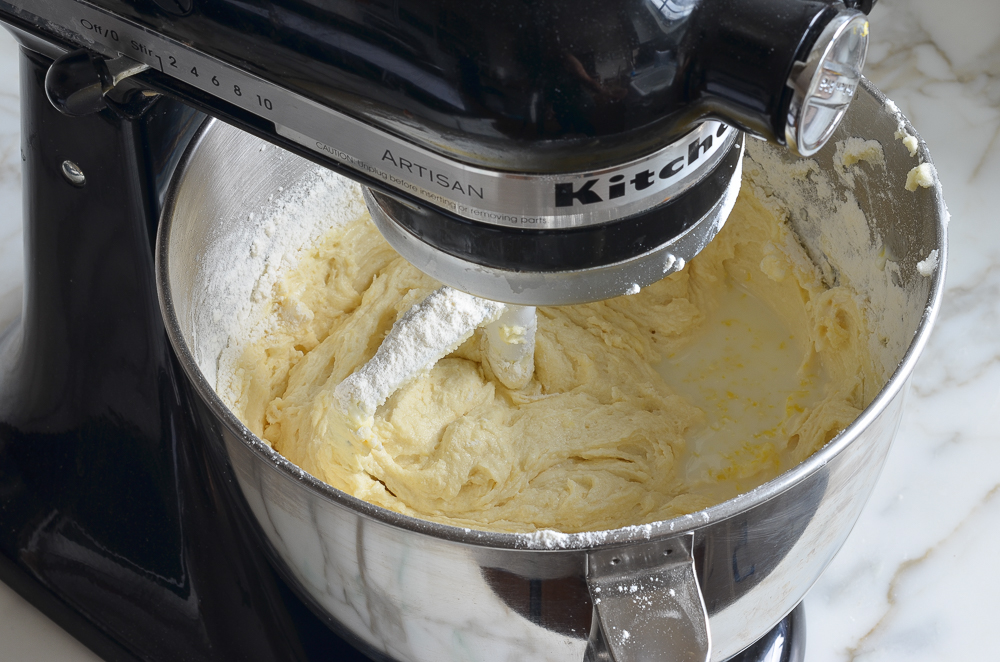
Scrape down the sides of the bowl, and give a quick mix to make sure all of the ingredients are well-incorporated.
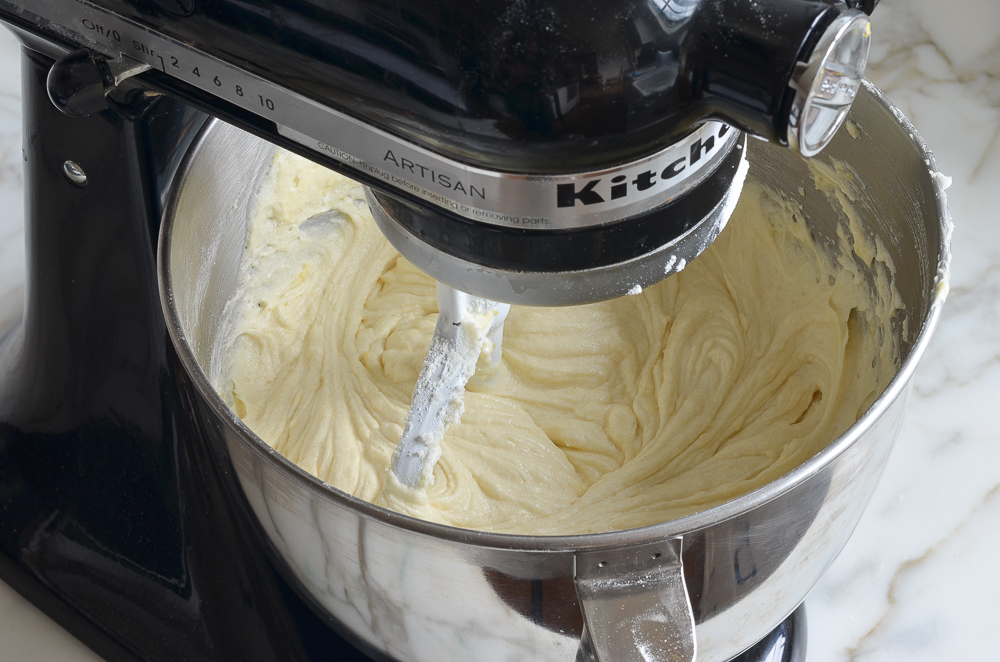
Transfer the cake batter to the prepared pans and smooth with a rubber spatula.
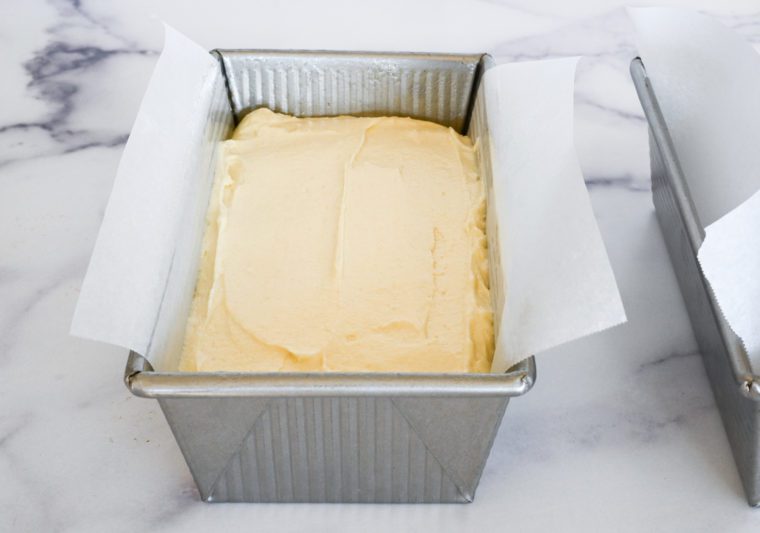
Bake for 55 to 65 minutes, or until the top is golden and a tester comes out clean.
Set the cakes on a cooling rack, and cool in the pans for 10 minutes.
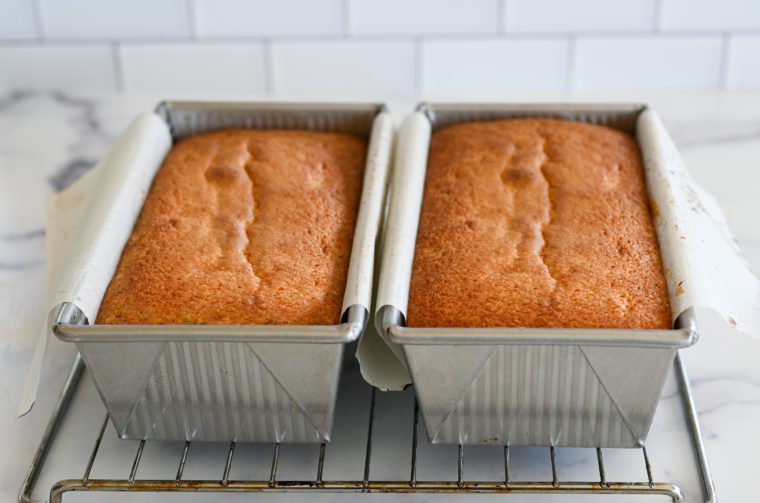
Carefully run a knife along the unlined sides of the pans to loosen the cake from the pan. Using the parchment slings, lift the cakes out of the pans and place onto the rack, leaving the parchment paper in place under the cakes. Let cool for about 1 hour.
When the cakes are almost cool, make the syrup. Combine the water and sugar in a saucepan and bring to a boil. Remove from the heat and stir in the lemon juice.
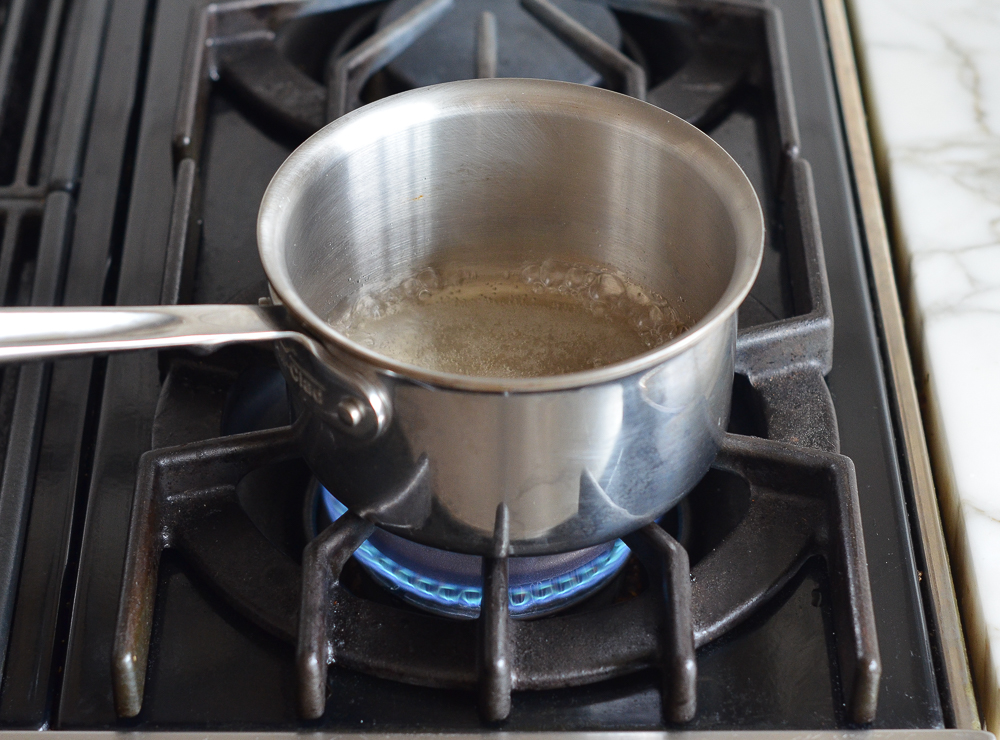
To make the glaze: in a medium bowl, whisk together the confectioners’ sugar and lemon juice. Add more confectioners’ sugar or lemon juice as necessary to make a thick but pourable glaze (it should be a little thicker than you’d think, about the consistency of molasses or honey).
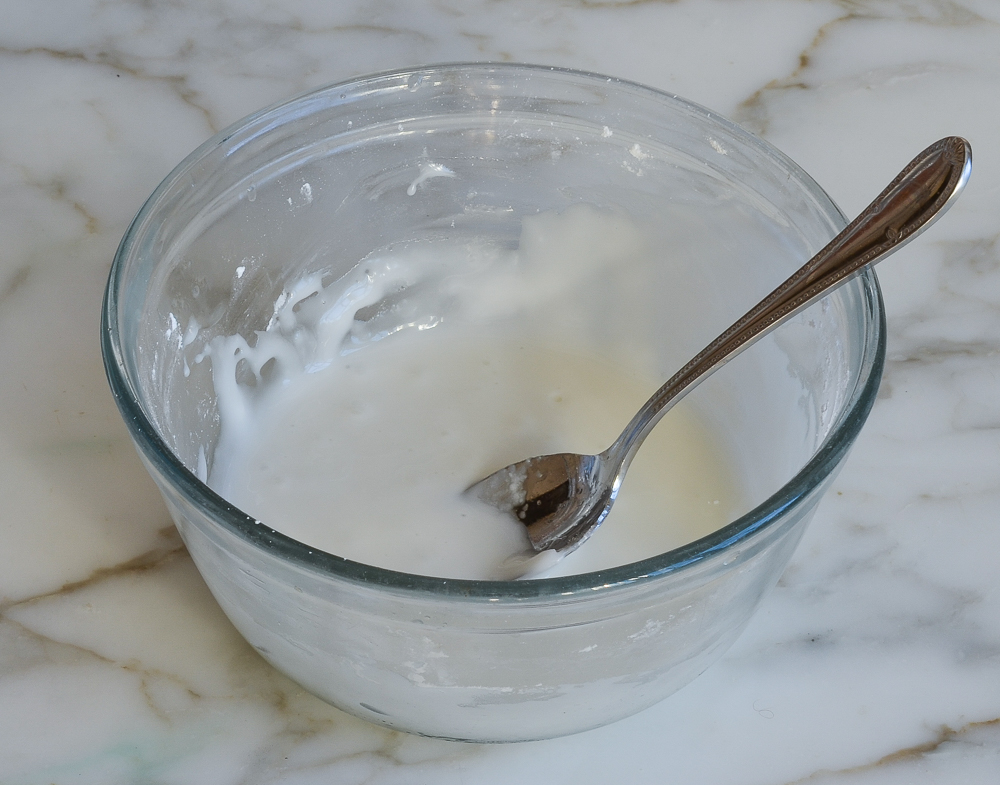
When the cakes are cool, carefully transfer them to serving platters. Gradually brush the warm syrup all over the cakes, including the sides, letting it soak in as you go.
Finally, spoon the glaze over the top of the cake, letting it drip down the sides.
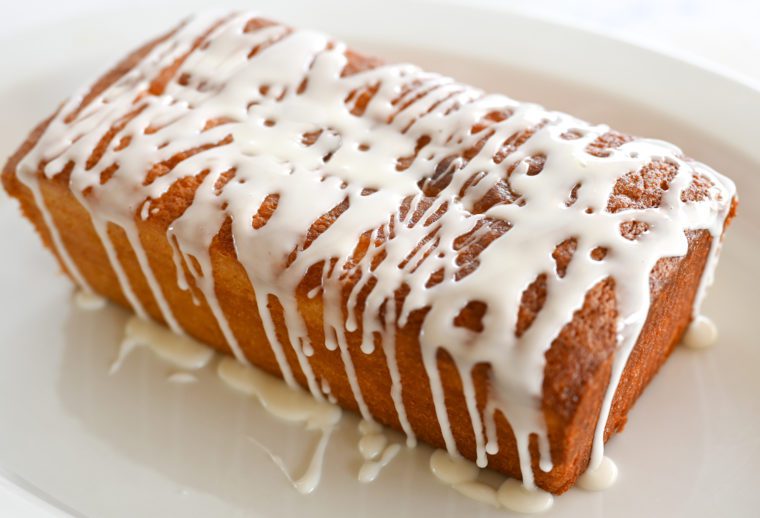
Let the cakes sit for about one hour to allow the glaze to set before serving.
How To Freeze Lemon Pound Cake
The cakes can be frozen without the glaze for up to 3 months. After they are completely cooled, double-wrap them securely with aluminum foil or plastic freezer wrap, or place them in a heavy-duty freezer bag. Thaw overnight on the countertop before serving. (Add the syrup before the cake is frozen and add the glaze after the cake is thawed.)
Note: This recipe was updated in 2022; to see the original version, click here.

You May Also Like
- Warm Lemon Pudding Cakes
- Lemon Poppy Seed Muffins
- Lemon Bars
- Cake Pans to Cookie Sheets: 16 Essential Baking Pans
Lemon Pound Cake
This lemon pound cake is the ultimate dessert for lemon lovers.
Ingredients
For the Cake
- 3 cups all-purpose flour, spooned into measuring cup and leveled-off with a knife
- ½ teaspoon baking soda
- ½ teaspoon salt
- 1 cup buttermilk (low-fat is fine) (see note)
- 2 tablespoons (packed) grated lemon zest (see note)
- 2 tablespoons fresh lemon juice
- 2 sticks (1 cup) unsalted butter, softened
- 2¼ cups granulated sugar
- 3 large eggs
For the Syrup
- 2 tablespoons water
- 2 tablespoons granulated sugar
- 2 teaspoons fresh lemon juice
For the Glaze
- 1 cup confectioners' sugar
- 2 tablespoons fresh lemon juice
Instructions
- Preheat the oven to 350°F and set an oven rack in the middle position. Spray two 8½ x 4½-inch loaf pans with nonstick cooking spray. Line the long sides of the pans with parchment paper “slings” and spray lightly with nonstick cooking spray again.
- In a medium bowl, whisk together the flour, baking soda and salt. Set aside.
- In another bowl, whisk together the buttermilk, lemon zest and lemon juice. Set aside.
- In the bowl of an electric mixer fitted with the paddle attachment (or beaters), cream the butter and sugar on medium speed until light and fluffy, 3 to 4 minutes. Scrape down the sides of the bowl, then beat in the eggs one at a time, beating well after each addition. Scrape down the sides of the bowl again.
- With the mixer on low speed, beat in one-quarter of the flour mixture, then one-third of the buttermilk mixture. Beat in another quarter of the flour, then another third of the buttermilk mixture. Repeat with another quarter of the flour and the remaining buttermilk mixture. Finally, beat in the remaining flour mixture. Scrape down the sides of the bowl, and give a quick mix to make sure all of the ingredients are well-incorporated.
- Divide the thick batter into the prepared pans and smooth with a rubber spatula. Bake for 55 to 65 minutes, or until the top is golden and a tester comes out clean.
- Set the cakes on a cooling rack, and cool in the pans for 10 minutes. Carefully run a knife along the unlined sides of the pans to loosen the cake from the pan. Using the parchment slings, lift the cakes out of the pans and place onto the rack, leaving the parchment paper in place under the cakes. Let cool for about 1 hour.
- When the cakes are almost cool, make the syrup. Combine the water and sugar in a saucepan and bring to a boil. Remove from the heat and stir in the lemon juice.
- When the cakes are cool, carefully transfer them to serving platters.
- Gradually brush the warm syrup all over the cakes, including the sides, letting it soak in as you go.
- To make the glaze: in a medium bowl, whisk together the confectioners' sugar and lemon juice. Add more confectioners' sugar or lemon juice as necessary to make a thick but pourable glaze (it should be a little thicker than you'd think, about the consistency of molasses or honey). Spoon the glaze over the top of the cake, letting it drip down the sides. Let the cakes sit for about one hour to allow the glaze to set before serving.
- Note: If you’d like to make your own buttermilk, check out the easy method here.
- Note: You'll need 4 to 5 large lemons for the entire recipe.
- Make-Ahead/Freezer-Friendly Instructions: The cakes can be made up to 1 day ahead of time and stored in a cake dome or airtight container at room temperature. They can also be frozen (without the final glaze) for up to 3 months. After they are completely cooled, double-wrap securely with aluminum foil or plastic freezer wrap, or place them in a heavy-duty freezer bag. Thaw overnight on the countertop before serving. (Add the syrup before the cake is frozen and add the glaze after the cake is thawed.)
Nutrition Information
Powered by ![]()
- Per serving (16 servings)
- Serving size: 1 slice
- Calories: 313
- Fat: 7g
- Saturated fat: 4g
- Carbohydrates: 59g
- Sugar: 40g
- Fiber: 1g
- Protein: 4g
- Sodium: 143mg
- Cholesterol: 51mg
This website is written and produced for informational purposes only. I am not a certified nutritionist and the nutritional data on this site has not been evaluated or approved by a nutritionist or the Food and Drug Administration. Nutritional information is offered as a courtesy and should not be construed as a guarantee. The data is calculated through an online nutritional calculator, Edamam.com. Although I do my best to provide accurate nutritional information, these figures should be considered estimates only. Varying factors such as product types or brands purchased, natural fluctuations in fresh produce, and the way ingredients are processed change the effective nutritional information in any given recipe. Furthermore, different online calculators provide different results depending on their own nutrition fact sources and algorithms. To obtain the most accurate nutritional information in a given recipe, you should calculate the nutritional information with the actual ingredients used in your recipe, using your preferred nutrition calculator.

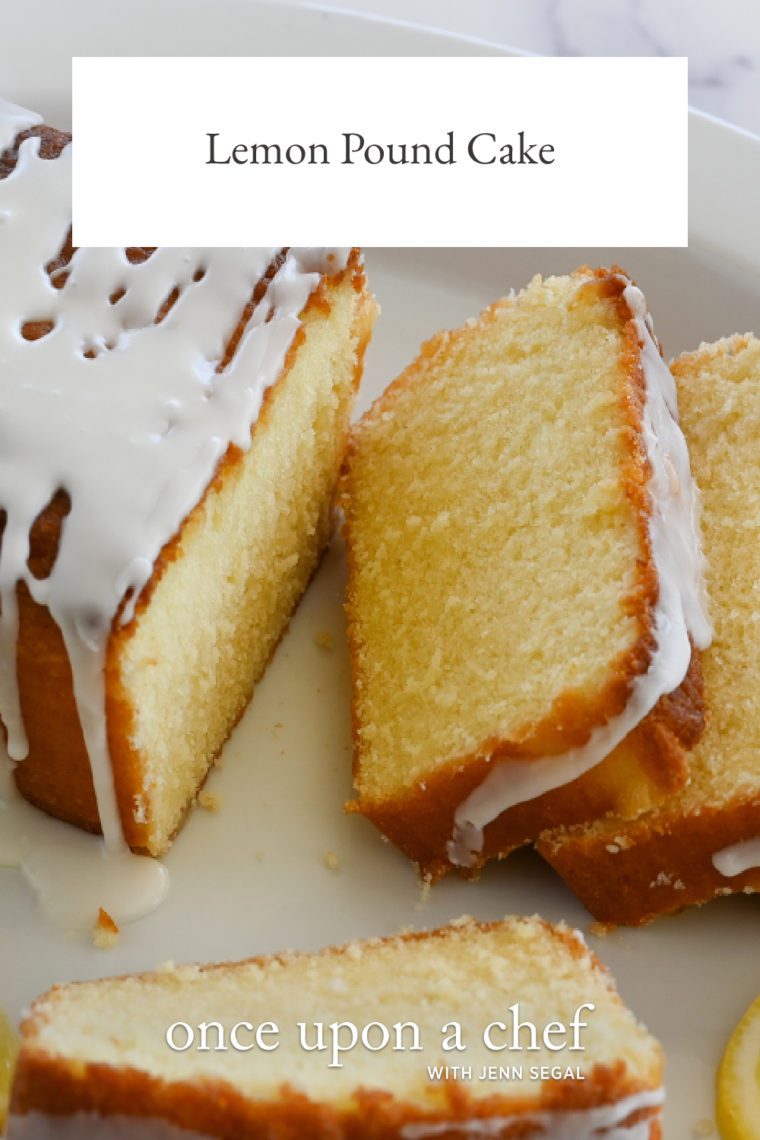
This may sound peculiar but being a weights and measures kind of person I need to know: will there be a difference between a cup of flour which has been “spooned and leveled” and a cup of flour which has been weighed (120g KAF)? Thanks
Hi Dawn, not a weird question. I always use the spoon and level method to measure flour (even when I weigh it) so the conversion to grams is consistent with using that method.
Hi Cecilia, I use King Arthur flour for all my baking, but when I weigh it, I consistently get between 125-130g per cup. The 375g is the amount I used for this recipe, so I’d go with that.
Hi Kahelah, I’m sorry for any confusion. That comment was before I started to consistently use 130 grams for a cup of flour. I’ve tested the cake with 390 grams and I’d go with that. Hope you enjoy!
Would you make any changes to this recipe if you were doing it in little loaf pans? I have a Wilton mini-loaf pan, where each little loaf comes out at 3.75″ x 2.25″. If you think it will work, I will give it a try. I’m not much of a baker…in fact I bake approximately twice a year: Thanksgiving and Christmas, and an occasional batch of chocolate chip cookies the rest of the year . So any advice would be appreciated.
Hi Meagan, I do think this will work in mini loaf pans. The only change would be the bake time. I’d start checking them at about 30 minutes. Hope that helps and that you enjoy!
Hello, Will lowering the amount of sugar hurt the recipe?
Hi Thomas, you can get away with reducing the sugar by about a quarter. Hope you enjoy!
I have made this recipe for years and love how versatile it is! I add more lemon and zest (I can’t get enough lemon). So so so good. I’ve also used this recipe and swapped all the lemon and zest for orange juice and zest. If I don’t have buttermilk, I’ve used both ricotta and sour cream in its place. I’ve added blueberries! This is an amazing recipe.
I followed the directions precisely with one exception. I didn’t have buttermilk, so I used a tablespoon of vinegar in heavy milk as a substitute- it turned out perfect! I also made 1.5 times the recipe for the glaze. The cake is moist, tart and delicious. This recipe is a keeper!
This recipe is amazing. I did add more lemon juice than called for but it was nice and fluffy. I really enjoyed this recipe this is part of my collection!
Loved it!
Absolutely awesome delicious cake! I followed the directions and had no problems. I did use baker’s joy to spray the pan, but added the sugar too. Scrumptious… I took a picture, but can’t find where to add it. Sorry. It was beautiful too.
So glad it turned out well! Unfortunately, the blog isn’t set up to receive pictures but if you’re on Instagram, you can share it there; be sure to tag me @onceuponachef!
My first making this cake, I followed the recipe to a tee. The cake tasted great, but it was too sugary, dense and dry. Could I have used less sugar and flour?
Hi Elsia, Sorry this wasn’t quite right for you! A dry or dense texture is usually caused by measuring the flour incorrectly. Did you use the spoon and level method to measure the flour? Even a few extra ounces can make a big difference. This article/video explains it nicely. And regarding it being too sweet, you can reduce the sugar by about a quarter, but any more than that and it will negatively impact the texture. Hope that helps!
It has been a family tradition to make this for the past 3 years, and it NEVER gets boring. The lemon really make it enjoyable to eat and you can have more than a slice. The syrup on the top adds a nice crackle (if you let it dry) and moisture. I find myself waking up early the next day to eat the remaining cake before anyone else gets it. Here are some tips: GET THE RIGHT INGREDIENTS, the ingredients are VITAL. You do not want to replace the buttermilk with normal milk because it doesn’t taste nearly the same. Make sure you have a lot of time for this, because it requires zesting and all. Also let your ingredients get to room temperature so no curdling happens. Last thing, make sure to grease your Bundt cake pan really well. It would be shame for the outside not to be as good as the inside. Also, when placing the icing, make sure to pour it on the highest point of the cake, so it spreads the outside of the ring and the inside with icing.
I made this cake and it was delicious. I made it in my Bundt pan so it came out really pretty. The only thing I added was one teaspoon of lemon extract to the wet ingredients because I love lemon so much. I still used the lemon zest and juice so it came out tasting really nice. I will make this cake again and I’ve added the recipe to my own family cook book 😍
I tried to follow recipe precisely except i used cake flour. The cake fell in the middle of baking. The taste is the best i ever tasted. Was the cake flour the culprit?
Hi Calvin, Yes, it’s very likely that the cake flour didn’t give the cake enough structure. For the best results, I’d stick with AP flour.